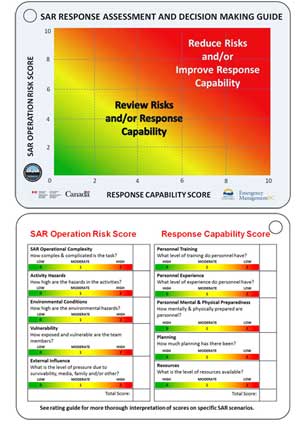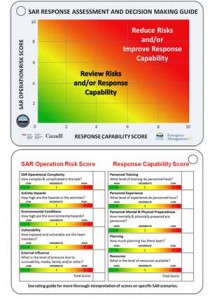The Waffle House Index

The Waffle House index is a metric – a way of measuring one thing to determine the value of another thing. What it is intended to measure is the impact of a natural disaster on a community. The idea goes like this; if the local community’s waffle house is open it indicates the functional level of the general community.
The rationale goes like this; for the waffle house to be open a number of other services have to be working. There has to be power, and water. There has to be food delivery. And finally, staff need to be available, and not dealing with emergent situations elsewhere.
As a general metric it works very well since it measures a lot of different factors in a single yes / no state.
The index bears a lot of similarities to the various temperature, wind chill, storm, tornado and earthquake scales in that they attempt to give a single simple number to indicate the strength of the various events, with the difference that this is intended to indicate impact which is often more valuable.
Response Assessment and Decision Making
 Earlier this year the BC Search and Rescue Association presented the results of a multi-year research project. The goal of the project was to give the SAR members in BC a tool to assist them in the analysis of risks and ability to adapt or respond to risks during SAR incidents.
Earlier this year the BC Search and Rescue Association presented the results of a multi-year research project. The goal of the project was to give the SAR members in BC a tool to assist them in the analysis of risks and ability to adapt or respond to risks during SAR incidents.
The end result was the Response Assessment and Decision Making Support tool.
The tool is deceptively simple. You score the risk on one axis, and you score your ability to handle the risk (or respond) on the other axis.
RISKS include the complexity of the operation, objective hazards, environmental conditions, vulnerabilities, and subjective hazards.
RESPONSE counters the risk with conditions such as training, experience, mental and physical preparedness, planning, and resources.
Specific guidance text giving examples of high, medium and low scores are provided for example SAR activities like Rope Rescue, Swiftwater Rescue, general ground SAR, and others. It can be adapted to many other SAR activities.
Simplicity
Now, your initial reaction to such a tool might be that it’s too simple, and that you (an experienced SAR volunteer or emergency responder) already do that kind of analysis subconsciously.
That would be the point.
The tool is intended to reflect what an experienced risk manager would already be thinking. By applying a score and a colour coded graph it allows the less experienced to benefit from the framework an experienced SAR member would apply to the situation. For the more experienced it gives a reminder and an objective list to evaluate against – valuable tools when operating in a high stress environment and under time-sensitive constraints.
The value of such checklists and frameworks has been amply demonstrated under many similar situations such as surgery, and military operations. Even experts miss details, and tools like this are extremely valuable to make sure you don’t miss the obvious. Using them does not make you any less of an expert.
Of course the tool is not intended to replace existing risk assessments, but to augment them – you’re not intended to get tunnel vision. The goal is to give you insight into how to evaluate a situation.
Finally, the tool gives you the ability to record your assessment of the situation and convey that to others.
Other Metrics
One of the metrics I heard used the other day was that it was a three litre hike – a hike on a warm day that required three litres of water.
Consider another metric from the avalanche industry (which has a lot of these) – foot penetration. This is a general measurement of the density and consolidation of new snow. When standing on skis or snowshoes you only “measure” the top few centimetres.
My own personal favourite for winter travel is the two hat day, something I learned from an ACMG guide. I saw him pull a toque over another toque and he commented that that’s how he deals with a colder day. The next stage is, of course, a hood.
What’s your favourite backcountry or SAR-related metric? Please share it in the comments below.

Leave a Reply